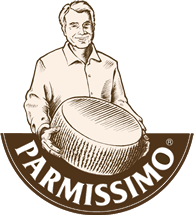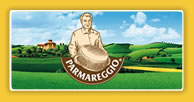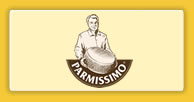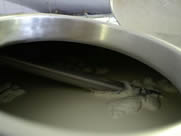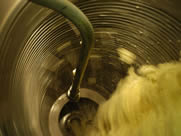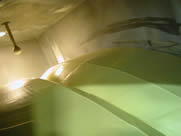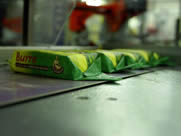 Nutritional - the connoisseur
Nutritional - the connoisseurFollow me and discover the tasty world of Parmigiano Reggiano, a food whose nutritional qualities make it suitable for people of all ages. I'll tell you about when Parmigiano Reggiano was born, about 900 years ago. A story of time-honoured taste.
Butter: the production
The raw material
The raw material used to make butter is the cream that comes from dairies that produce two famous DOP cheeses, Parmigiano Reggiano and Grana Padano.
The vast majority of our suppliers are dairies located in the Parmigiano Reggiano production area.
This close collaboration with our suppliers, consolidated over the years, allows controlling thoroughly every phase of the production chain.
Pasteurisation and ripening
The collected cream undergoes centrifugation and is pasteurised immediately after.
This delicate stage of the process is constantly monitored and recorded by an automated supervision system that ensures the highest level of safety, in compliance with European standards.
Once pasteurised, the cream is left to rest naturally in dedicated vats.
During this stage, the temperature is constantly monitored to allow obtaining perfect crystallisation for a high level of spreadability of the finished product.
The raw material
The raw material used to make butter is the cream that comes from dairies that produce two famous DOP cheeses, Parmigiano Reggiano and Grana Padano.
The vast majority of our suppliers are dairies located in the Parmigiano Reggiano production area.
This close collaboration with our suppliers, consolidated over the years, allows controlling thoroughly every phase of the production chain.
Pasteurisation and ripening
The collected cream undergoes centrifugation and is pasteurised immediately after.
This delicate stage of the process is constantly monitored and recorded by an automated supervision system that ensures the highest level of safety, in compliance with European standards.
Once pasteurised, the cream is left to rest naturally in dedicated vats.
During this stage, the temperature is constantly monitored to allow obtaining perfect crystallisation for a high level of spreadability of the finished product.
Churning
Subsequently, the pasteurised cream is churned. During this stage, the fat globules in the cream adhere together, and butter is made.
During this stage, the sophisticated Nirs system constantly and consistently monitors the addition of milk enzymes and all the chemical parameters of the product.
Packaging and shipment
From churning to packaging, butter is handled in fully closed systems, without any manual intervention. All this is to prevent any contamination risk.
High speed packaging lines allow packaging any format required by the market. Moreover, they are equipped with cartoning and automatic weight control.
Once packaged, before being shipped, butter is refrigerated at a constantly monitored and recorded temperature, whilst awaiting the positive outcome of the strict and thorough inspections carried out by the Quality Department on every lot.
This allows maintaining a high level of food safety and quality at all times.
Subsequently, the pasteurised cream is churned. During this stage, the fat globules in the cream adhere together, and butter is made.
During this stage, the sophisticated Nirs system constantly and consistently monitors the addition of milk enzymes and all the chemical parameters of the product.
Packaging and shipment
From churning to packaging, butter is handled in fully closed systems, without any manual intervention. All this is to prevent any contamination risk.
High speed packaging lines allow packaging any format required by the market. Moreover, they are equipped with cartoning and automatic weight control.
Once packaged, before being shipped, butter is refrigerated at a constantly monitored and recorded temperature, whilst awaiting the positive outcome of the strict and thorough inspections carried out by the Quality Department on every lot.
This allows maintaining a high level of food safety and quality at all times.
